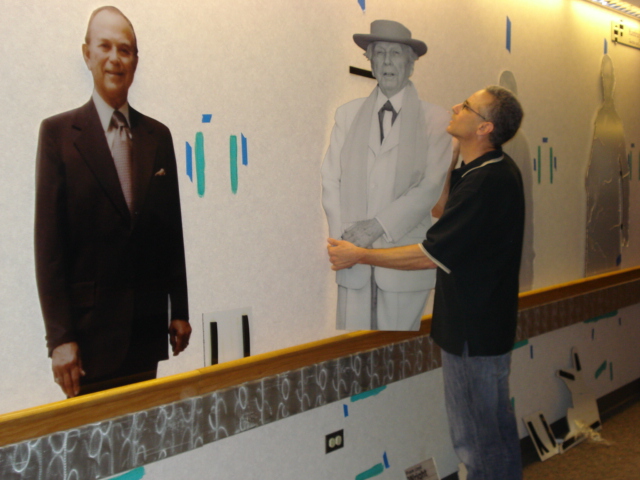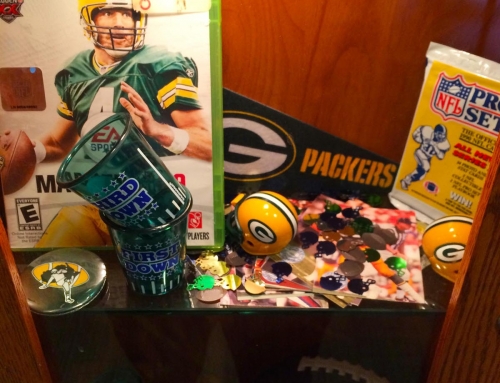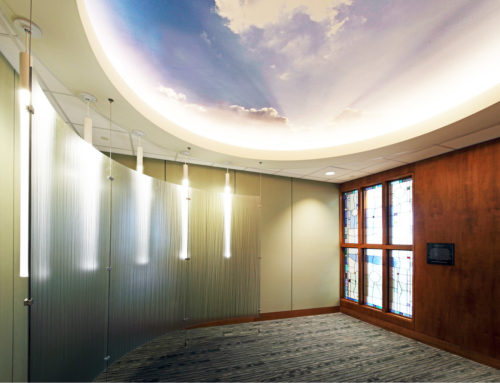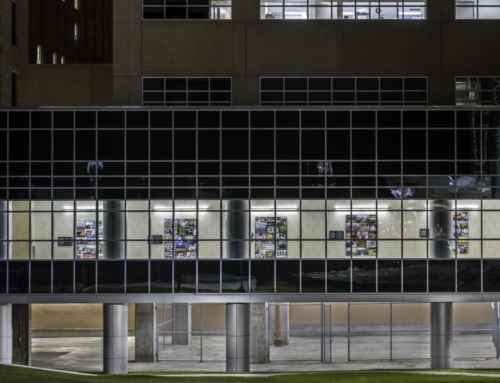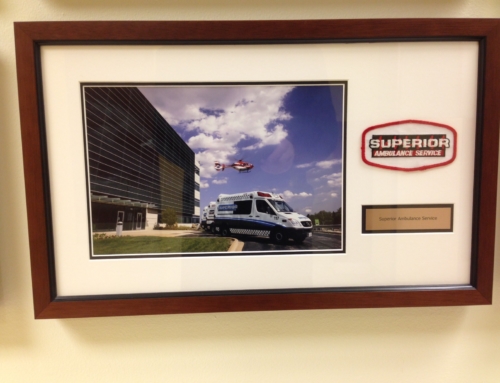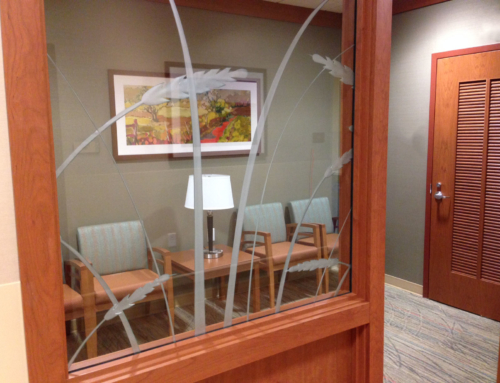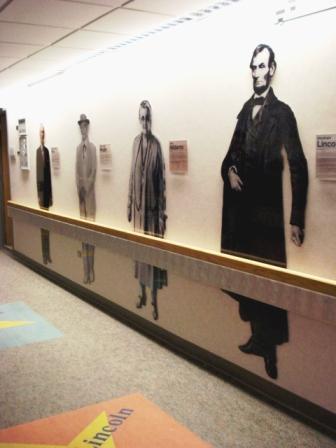 What do Michael Jordan, Abraham Lincoln, Jane Addams, Frank Lloyd Wright, Ray Kroc, Cammi Granato and Joseph Cardinal Bernardin have in common? All seven famous personalities are featured in an educational installation at Loyola University Medical Center’s Ronald McDonald Children’s Hospital and were recently given a “facelift” by local framer/art consultant Jan Marion of H. Marion Framing Studio. The installation employs life-sized images of the personalities, along with name plaques that detail information about their lives and accomplishments. While the display is an important educational tool for the RMCH ward, it also provides stimulating relief from the barrage of tests and procedures that young patients endure during their stays at the facility.
What do Michael Jordan, Abraham Lincoln, Jane Addams, Frank Lloyd Wright, Ray Kroc, Cammi Granato and Joseph Cardinal Bernardin have in common? All seven famous personalities are featured in an educational installation at Loyola University Medical Center’s Ronald McDonald Children’s Hospital and were recently given a “facelift” by local framer/art consultant Jan Marion of H. Marion Framing Studio. The installation employs life-sized images of the personalities, along with name plaques that detail information about their lives and accomplishments. While the display is an important educational tool for the RMCH ward, it also provides stimulating relief from the barrage of tests and procedures that young patients endure during their stays at the facility.
About nine years ago, a previous installer had created the display out of paper, which simply didn’t hold up. The hospital, not wanting to get rid of the display, decided that it needed a more permanent application. Enter Jan Marion of H. Marion Framing, long-time picture framer to Chicago’s North Shore and trusted art consultant for Loyola University Medical Center, as well as a host of other healthcare facilities across the Midwest.
Marion, who as always, welcomed the challenge to meet his client’s needs, notes that “Just as in the world of medicine, so too is technology ever-evolving in the art world. When LUMC came to me with their problem, I searched for the best solution for the project; one that would weather years of the day-in day-out trials of cleaning and contact that the previous installation had not been able to withstand.”
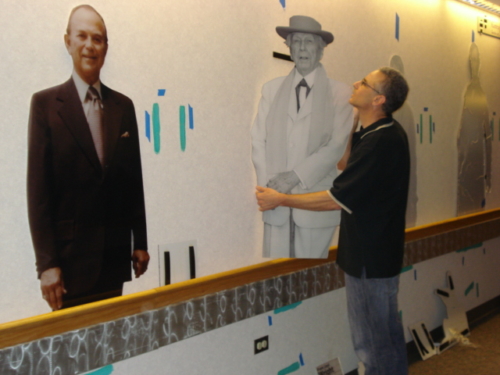 Marion’s solution involved a new printing process, whereby an image is printed on the back side of sturdy, die-cut acrylic, protecting the image from abrasion & wear. The new installation also boasted a star boulevard, featuring the personalities’ names embedded in the carpet design beneath each of their respective images, providing further visual stimulation for patients at RMCH. The acrylic figures were finally secured to the wall by a fully removable process, protecting the investment in both artwork and wall condition, should the hospital decide to relocate the display at any point in the future. “There was a fair amount of discussion as to the best way to secure the life-sized displays once they were ready. The solution we implemented really gave us the least invasive option and a very satisfactory result.” said Marion, “The previous installers did a fair job, but they didn’t consider longevity. We looked at the big picture – in an environment like this, we knew how important it would be to implement both versatility and staying-power. We delivered both.”
Marion’s solution involved a new printing process, whereby an image is printed on the back side of sturdy, die-cut acrylic, protecting the image from abrasion & wear. The new installation also boasted a star boulevard, featuring the personalities’ names embedded in the carpet design beneath each of their respective images, providing further visual stimulation for patients at RMCH. The acrylic figures were finally secured to the wall by a fully removable process, protecting the investment in both artwork and wall condition, should the hospital decide to relocate the display at any point in the future. “There was a fair amount of discussion as to the best way to secure the life-sized displays once they were ready. The solution we implemented really gave us the least invasive option and a very satisfactory result.” said Marion, “The previous installers did a fair job, but they didn’t consider longevity. We looked at the big picture – in an environment like this, we knew how important it would be to implement both versatility and staying-power. We delivered both.”


